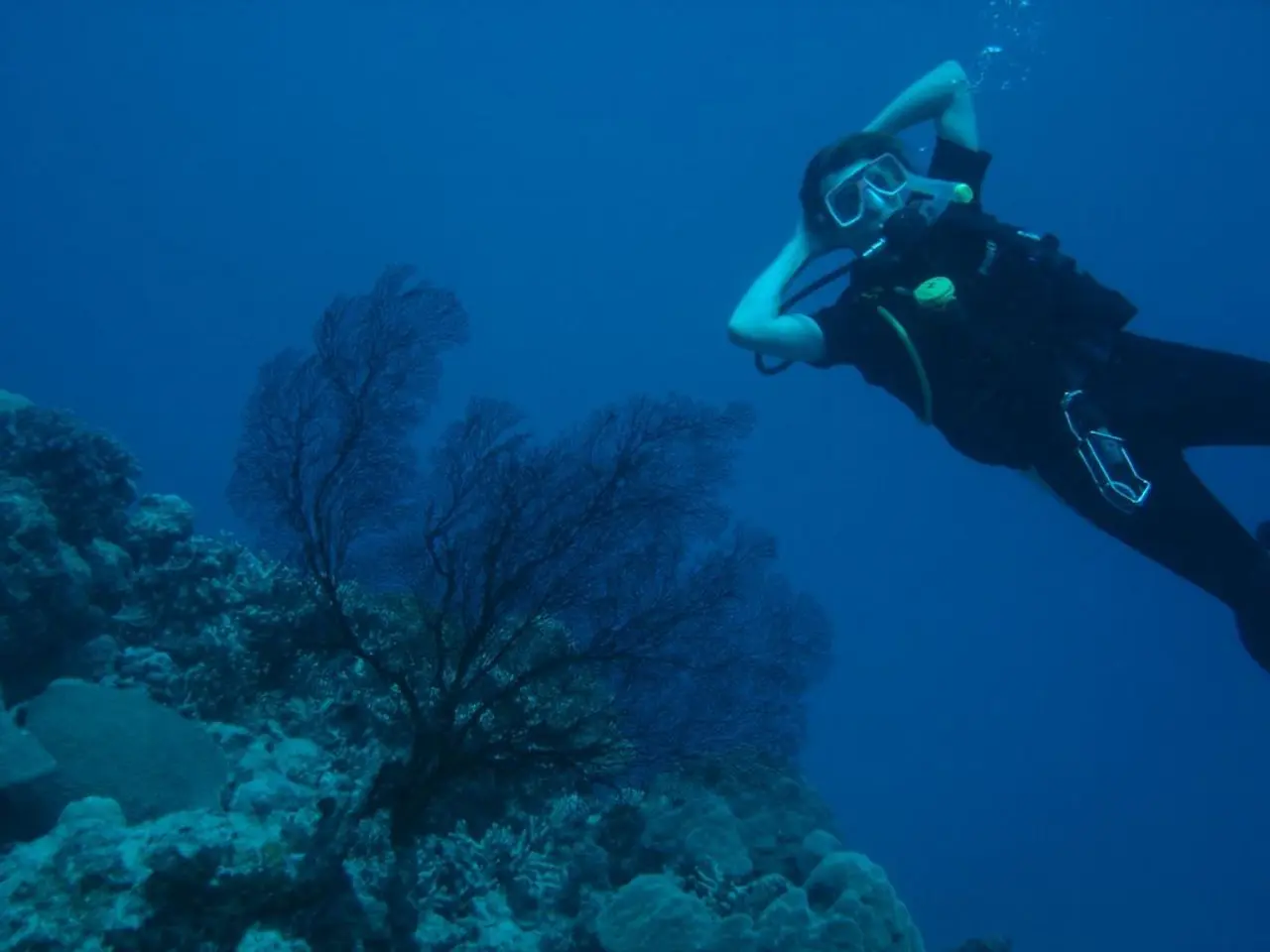Uncommon Genetic Abnormality Enables Humans to Maintain Breath Control for Extended Periods
British Bajau: The Sea Nomads with Remarkable Breath-holding Abilities
The Bajau people, often referred to as the "sea nomads," living in Southeast Asia, have a unique genetic advantage that sets them apart from the rest of the world. Their extraordinary breath-holding abilities, enabling them to dive underwater for minutes without equipment, are a result of specific genetic adaptations.
One of the key genetic adaptations is an enlarged spleen, up to 50% larger than average, which acts as a natural "oxygen tank." This spleen, genetically influenced, stores and releases oxygenated red blood cells during prolonged dives, allowing the Bajau to hold their breath for extended periods underwater.
Another significant adaptation is the selection on the BDKRB2 gene, which modulates the human diving reflex. This reflex involves physiological responses like slowing heart rate and constricting blood vessels to conserve oxygen during submersion. The adaptation in BDKRB2 helps optimize these reflexes, giving the Bajau an enhanced capacity to manage oxygen use during breath-hold diving.
Compared to other genetic conditions linked to breath-holding, the Bajau adaptations are specialized for diving reflex and oxygen management during underwater breath-hold. Their combination of a genetically larger spleen and selected variants in diving reflex genes like BDKRB2 is distinct because it directly supports oxygen conservation and utilization in aquatic free-diving.
The Bajau's breath-holding abilities have broad implications for science and medicine. Understanding the genetic and physiological factors that enable extreme breath-holding has implications for hypoxia tolerance, oxygen management, and diving medicine. Studying genetic variations in oxygen transport and storage may improve interventions for chronic respiratory diseases.
Research into hypoxia-inducible pathways could lead to therapies that protect tissues from oxygen deprivation during medical emergencies. The evolution of breath-holding adaptations is closely tied to the survival needs of specific populations, such as the Bajau, who rely on freediving for subsistence.
Freedivers and professional divers rely on rigorous physical and mental preparation to push the limits of their breath-holding capacity. Key factors influencing breath-holding capacity include spleen size, hypoxia-inducible pathways, carbon dioxide tolerance, lung function, and blood circulation.
Other rare genetic conditions or variations may also enhance breath-holding capacity, although these are less well-documented. Similar evolutionary pressures may have shaped adaptations in other populations exposed to extreme environments, such as high altitudes.
The findings from the study of the Bajau's breath-holding abilities deepen our understanding of human evolution, illustrating how genetic diversity enables populations to adapt to diverse and challenging environments. As research continues, we gain a deeper appreciation for the resilience of the human body and valuable insights that could revolutionize medicine, improve diving safety, and inspire further exploration of our evolutionary potential.
- The Bajau's extraordinary breath-holding abilities, due to specific genetic adaptations, may have implications for research in the field of health and wellness, potentially leading to therapies that protect tissues from oxygen deprivation during medical emergencies.
- The unique genetic adaptations of the Bajau, such as an enlarged spleen for oxygen storage, could offer insights into managing chronic medical conditions related to oxygen management.
- Studies on the Bajau's breath-holding abilities also provide valuable information for the field of fitness and exercise, shedding light on key factors like spleen size, carbon dioxide tolerance, and blood circulation that influence breath-holding capacity.
- The Bajau's enhanced breath-holding abilities, resulting from the optimization of diving reflex genes like BDKRB2, highlight the incredible potential for mental-health adaptations in response to the demands of specific environments and lifestyles.
- As we delve deeper into the evolutionary processes that have shaped the Bajau's breath-holding abilities, we not only gain a broader understanding of human evolution but also open the door to future discoveries in space and astronomy, where understanding the human body's response to low-oxygen environments could be vital.




